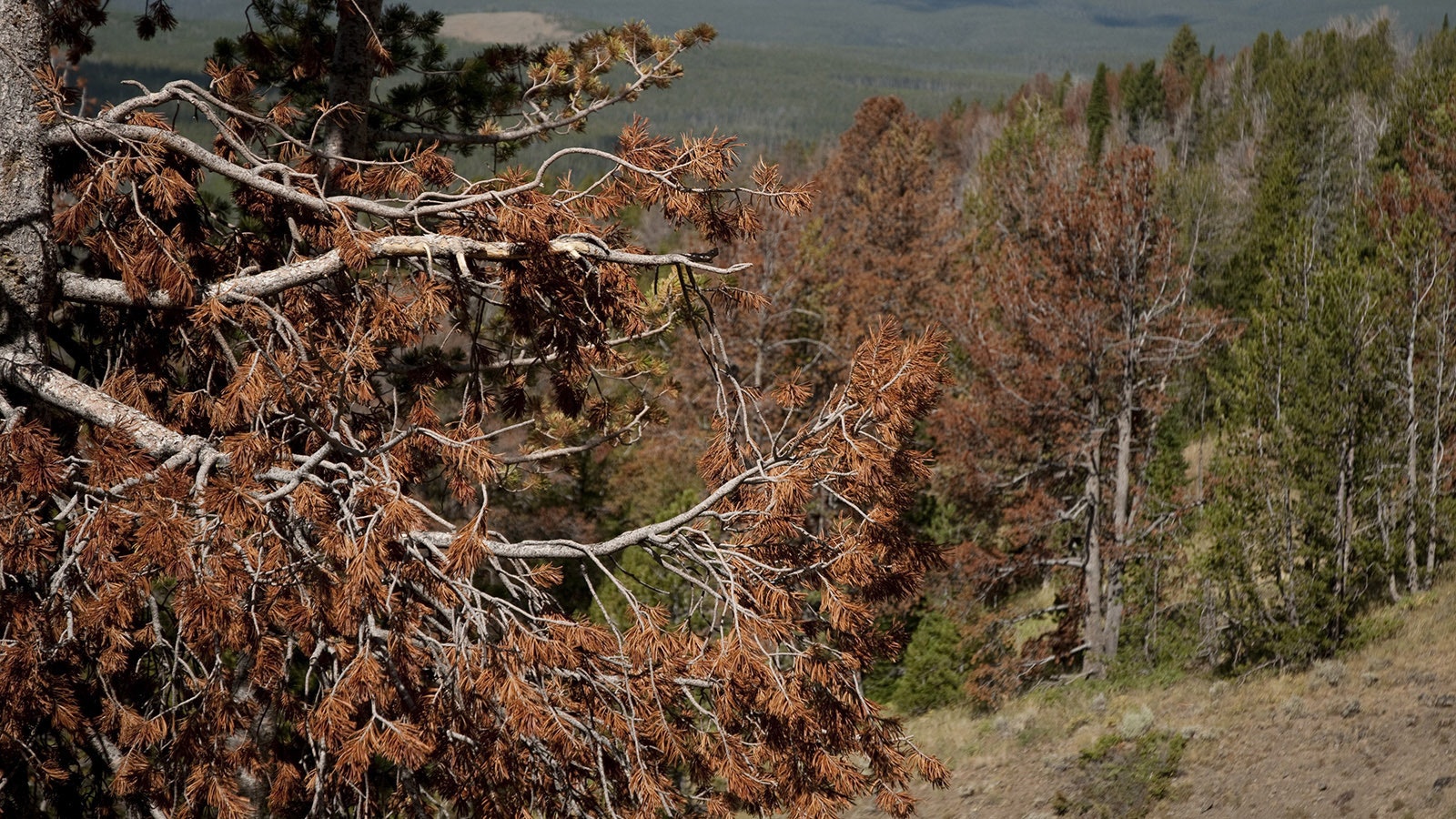Among wildlife in fire-ravaged swaths of northern Wyoming where hundreds of thousands of acres of grasslands have burned, antelope have had a hard time in terms of being burned to death.
There’s also concern that a lack of forage in burnt-out areas could starve out elk and deer over the coming winter.
As far as wildlife is concerned, it seems so far that only pronghorn, commonly called antelope, have been killed by the fires, Christina Schmidt, Wyoming Game and Fish Sheridan Region spokesperson, told Cowboy State Daily.
“In recent days, wildlife managers have located approximately 50 pronghorn throughout the burned areas that were deceased or required euthanasia,” she said. “At this time, they have not found any deer or elk mortalities.
“Pronghorn have difficulty navigating some fence types and therefore more difficulty escaping fire. Most other wildlife species are more adept at escape.”
Worried About Food For Elk, Deer
Even though elk and deer might have evaded the flames, Gillette-area resident and outdoorsman Mitch Gilliam told Cowboy State Daily that he’s worried about them starving.
Forage is expected to grow back, but it might not be enough to feed big game herds this coming fall and winter, he said.
“Our growing season for this year is almost over,” said Gilliam, who launched a GoFundMe page to raise money to buy hay and specialized deer feed pellets.
Hay could be used to feed elk as well as area ranchers’ cattle, he said.
With deer, it’s tricky. It takes time for their digestive systems to adjust to hay. Wildlife officials warn that feeding deer hay can kill them if their digestive systems don’t adjust correctly to it.
That’s why it’s important to have specialized deer feed on hand as winter approaches, Gilliam said.
Another concern is that invasive weeds could take over in burnt areas, pushing out forage for wildlife and cattle, Zach Warren, spokesman for the Wyoming Weed and Pest Council, told Cowboy State Daily.
“Weeds can certainly box out native species because of their stronger and faster-growing root systems compared to native plants,” he said.
There also are numerous efforts underway to help ranchers who have been devastated by the fires.
Could The Wildlife Death Toll Rise?
Although the immediate wildlife death toll seems minimal, the fires could have deadly long-term effects, Schmidt said.
“It is not possible to do a complete survey of impacted areas, so exact numbers of losses will not be known,” she said. “At this time, we do not expect immediate population-level impacts on big game in the area. However, it is likely there will be additional losses of wildlife in coming days and weeks.
“These later losses can occur when wildlife die of symptoms related to smoke inhalation, such as pneumonia or develop infection from burns and other causes. Wildlife managers cannot anticipate what level of these types of mortalities will be seen.”
For now, Game and Fish, other agencies and local landowners are keeping an eye on things, Schmidt said.
A harsh winter could tip the scales against elk, deer and antelope herds.
“Looking out longer term, there may be impacts to wildlife due to loss of forage, depending on upcoming winter conditions,” Schmidt said.
No Plans To Limit Hunting
There’s also the question of how the fires will affect hunting. Many archery hunting seasons opened in mid-August, and rifle hunting seasons are set to kick off in October.
Hunting seasons in the affected areas should go forward as planned, Schmidt said.
“Not every hunt area has been equally impacted, and in some cases, such as Elk Hunt Area 129, the impacted area from this fire is small compared to the overall size of the hunt area,” she said.
Game and Fish isn’t planning to restrict hunting because of the fires but is still giving hunters the heads up that their seasons might be rough.
“Game and Fish has reached out via email to resident and non-resident limited quota license hunters in the affected areas,” Schmidt said. “The email provided information on the fires and an explanation of what options are available to them if their hunting opportunity has been lost.”
Thursday Update
• As of Thursday afternoon, the House Draw Fire in Johnson County measured at 174,683 acres and was 94% contained, the Wyoming State Forestry Division reports. It was the quickest to grow past 100,000 acres after a series of wildfires sparked about a week ago, but it’s also the first to reach near-containment.
• In nearby Campbell County, the Flat Rock Fire the northwest of Gillette measured at 52,421 acres Thursday afternoon and was 75% contained. In a residentially-packed area, the Flat Rock has damaged fences, cattle and ranchlands, and continues to flare in pockets of juniper and pinyon timber.
• The Constitution Fire north of Gillette had burned 24,594 acres as of Thursday afternoon, and was 57% contained, the WSFD reports.
• The Remington Fire in Sheridan County and southeast Montana measured at 196,459 acres in size with 61% containment, up from 50% containment reported the day before.
• In the more timber-dense region near the Teton and Fremont County line in northwest Wyoming, the Fish Creek Fire measured at 11,462 acres and 34% completion.
Mark Heinz can be reached at mark@cowboystatedaily.com.









